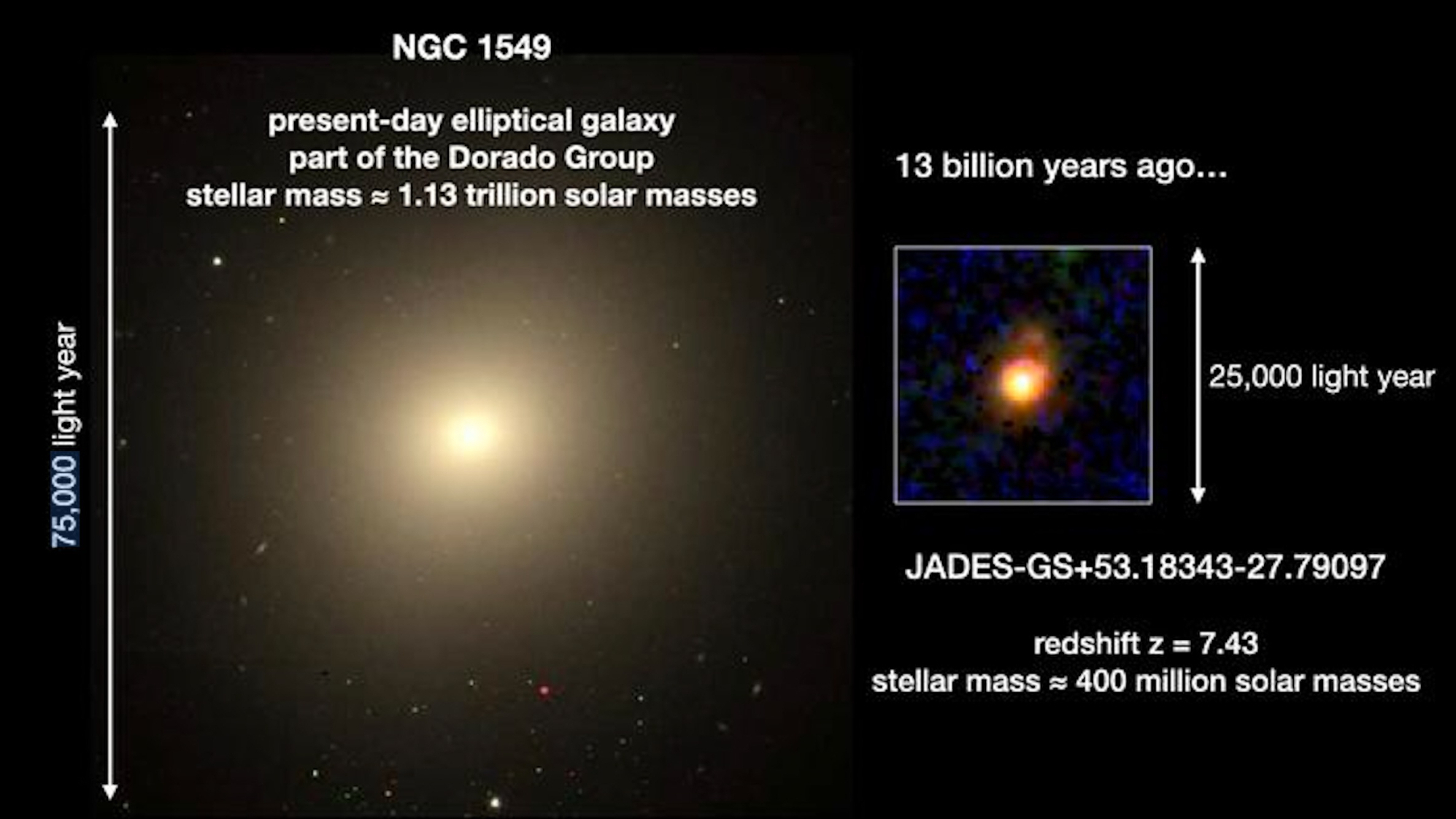Researchers using NASA’s James Webb Space Telescope have made a fascinating discovery about an early-universe galaxy, just 700 million years after the Big Bang. This galaxy displays a unique ‘inside-out’ star formation pattern, challenging previous assumptions about how galaxies evolve. The findings provide valuable insights into the formation and growth of galaxies in the early stages of the universe.

Unveiling the Mysteries of Early-Universe Galaxy Formation
The universe has come a long way since the Big Bang, with galaxies like our Milky Way now composed of hundreds of billions of stars. However, the formation and evolution of these celestial behemoths have long been a subject of fascination for astronomers.
Recently, researchers using NASA’s cutting-edge James Webb Space Telescope (JWST) have peered deep into the distant past, studying a galaxy that existed just 700 million years after the Big Bang. This early-universe galaxy has revealed a fascinating and unexpected pattern of star formation, challenging our previous understanding of how galaxies grow and evolve.
The galaxy was observed as part of the JWST Advanced Extragalactic Survey (JADES) collaboration, and the team found that it was actively forming stars. Interestingly, this ancient galaxy had a very dense core, similar to the galaxies we see in the universe today. However, the researchers noticed that the star formation was happening farther away from the core, with activity gradually increasing towards the outskirts of the galaxy as it grew in size.
Unveiling the Secrets of ‘Inside-Out’ Star Formation in Early Galaxies
This ‘inside-out’ star formation pattern was something that astronomers had previously predicted through theoretical models, but now they have the observational data to confirm their hypothesis.
“One of the many reasons that Webb is so transformational to us as astronomers is that we’re now able to observe what had previously been predicted through modeling,” said study co-author William Baker, a PhD student at the Cavendish Laboratory at the University of Cambridge in England. “It’s like being able to check your homework.”
Using the wealth of data provided by the JWST, the researchers were able to estimate the ratio of young stars to older stars in the galaxy. This, in turn, allowed them to calculate the average stellar mass and formation rate. The data revealed that the core of the galaxy was dominated by older stars, while the surrounding disc of gas and dust was undergoing very active star formation, doubling its stellar mass in the outskirts roughly every 10 million years.
The researchers propose two possible scenarios to explain this ‘inside-out’ star formation pattern. The first is a continuous process of inside-out growth, where early disc formation took place in a very compact disc, forming the currently observed core. Alternatively, the disc may have formed first, then experienced an infall of gas into the center due to compaction, possibly triggered by instability in the disc. This would have formed the core, and the disc would then have re-formed via the accretion of new gas.
Either way, the findings challenge the previous assumption that early-universe galaxies were simply smaller versions of the massive, mature galaxies we see today. Instead, they suggest a more complex and dynamic process of galaxy formation and growth, with star formation occurring in unexpected patterns.
Implications and Future Directions for Understanding Early Galaxy Formation
The discovery of this ‘inside-out’ star formation pattern in an early-universe galaxy is a significant step forward in our understanding of how galaxies evolve over time. By investigating more galaxies at similar stages of cosmic history, the researchers hope to gain a better understanding of the diverse pathways that lead to the formation of the grand spiral and elliptical galaxies we see in the present-day universe.
“The team wants to observe more galaxies at a similar time in the early universe to see if they share these star formation dynamics,” said study lead author Sandro Tacchella. “By investigating galaxies across time, astronomers will gain a better understanding of how galaxies grow and evolve to become the bustling behemoths we see today.”
This research highlights the incredible power and potential of the James Webb Space Telescope, which is continuing to revolutionize our understanding of the early universe and the formation of its celestial inhabitants. As astronomers delve deeper into the cosmic past, they are uncovering new and unexpected insights that challenge our existing theories and push the boundaries of our knowledge. The journey of discovery is far from over, and the future holds even more exciting revelations about the origins and evolution of the galaxies that populate our universe.
